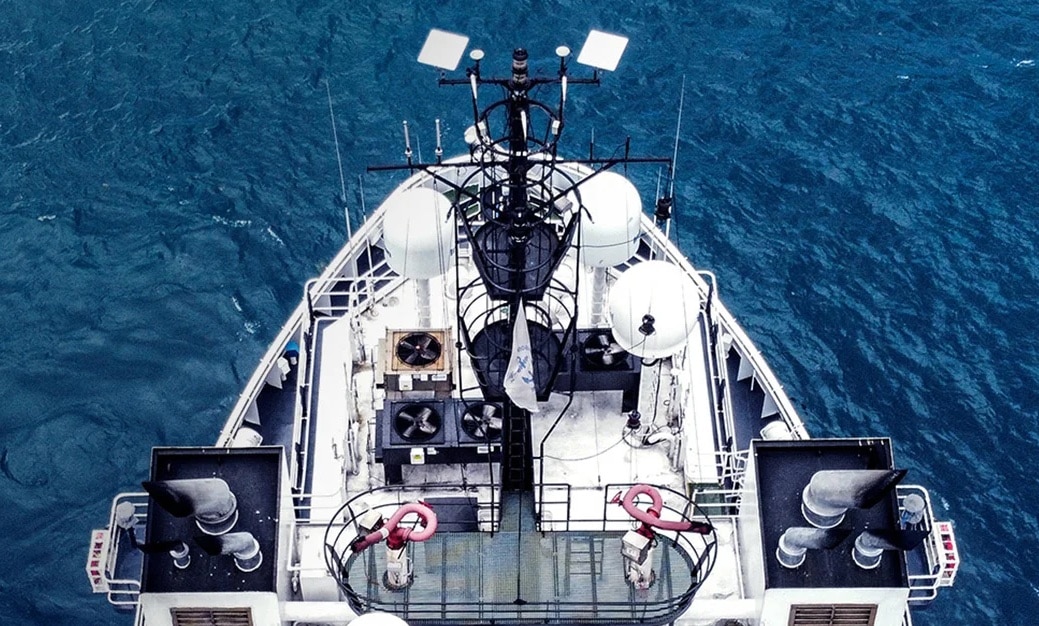- 🚢 Japan’s Self-Defense Force (JSDF) is testing SpaceX’s Starlink on two MSDF training vessels.
- 🌐 Starlink allows crew members to access the internet during off-duty hours.
- 📡 Download speeds of 220 Mbps are expected, enabling multiple devices to stream videos.
- ✉️ Previously, crew could only send emails twice per day to registered recipients.
- 🛳️ The target is to install Starlink on about 90% of MSDF surface vessels within three years.
- 🎓 Over 570 personnel, including 190 officer candidates, are on board the two training ships.
- 🌍 The ships will undertake a 175-day voyage visiting 11 countries.
- 🔍 The trial aims to enhance crew communications amidst growing regional security challenges.
- 📉 Japan’s low birth rate impacts recruitment efforts for the Self-Defense Forces.
In an era where seamless communication is paramount, the Japan Self-Defense Force (JSDF) has embarked on a groundbreaking initiative that could set the tone for modern naval operations worldwide. This trial integrates SpaceX’s Starlink satellite internet service on MSDF (Maritime Self-Defense Force) training vessels. The experiment, poised to enhance life at sea for Japanese sailors, holds significant implications for global maritime practices.
Enhancing Connectivity at Sea
The Starlink Advantage
SpaceX’s Starlink is not just any satellite internet service; it’s a beacon of advanced technology, promising high-speed connectivity even in the remotest of locations. For the JSDF, integrating Starlink on two of its training vessels, Kashima and Shimakaze, provides a testbed for evaluating its potential benefits.
- Internet Accessibility: Starlink brings the internet to sailors’ fingertips, a significant leap from the days when they could only send emails twice a day to registered recipients. Now, off-duty crew members can surf the web, stay connected with family, and even stream videos.
- High-Speed Connectivity: According to KDDI Corp., the Japanese telecom partnering with SpaceX, the expected download speeds are about 220 Mbps. This bandwidth is sufficient to support multiple devices streaming videos simultaneously, drastically improving sailors’ quality of life during long voyages.
The Potential Impact on Naval Operations
Strategic and Operational Benefits
While the personal convenience for the crew is substantial, the strategic advantages of having reliable, high-speed internet at sea are multifaceted:
- Enhanced Communication: Reliable internet facilitates better communication channels within the fleet and with base operations, crucial for real-time strategic and tactical decisions.
- Data Transmission: Quick and efficient data transfer capability means more seamless sharing of critical information, potentially improving operational coordination and efficiency.
- Sailor Morale: Improving sailors’ quality of life helps maintain high morale, essential for the endurance required during prolonged missions at sea.
Future-Proofing the MSDF
Expansion Plans
The current trial with the vessels Kashima and Shimakaze is just the beginning. There’s a target to equip about 90% of the MSDF’s surface vessels with Starlink within the next three years. This widespread adaptation could revolutionize naval operations and further strengthen Japan’s maritime capabilities amidst growing regional security challenges:
- Border Security: Enhanced communication and data relay will be crucial as Japan grapples with security concerns around China’s activities in Southeast Asia and the perpetual threat of North Korea.
A Strategic Recruitment Tool
Attracting New Talent
Japan’s low birth rate has been a persistent hurdle in recruitment for the Self-Defense Forces. Integrating modern technology such as Starlink can act as a significant incentive for young recruits. Offering high-quality living standards at sea, akin to their onshore counterparts, could make naval careers more appealing.
The Voyage Ahead: Testing and Real-World Application
The 175-Day Mission
The two MSDF training ships, Kashima and Shimakaze, are set for a 175-day voyage visiting 11 countries, including Italy, Turkey, Britain, and the United States. This extensive sea journey will serve as an ideal testing ground for Starlink’s operational capabilities and efficacy over prolonged periods:
- Real-World Conditions: This voyage involves over 570 personnel, including 190 MSDF officer candidates, all of whom will rely on Starlink for both personal and operational communications.
- Extensive Use Cases: The trial will cover a myriad of use scenarios, providing valuable data and insights into how Starlink can support and enhance maritime operations.
Conclusion
The JSDF’s venture into integrating Starlink satellite internet service on training vessels marks a significant stride towards modernizing naval operations. With improved communication, enhanced sailor welfare, and strategic advantages, Starlink stands to transform the maritime landscape. As Japan navigates its regional security dynamics, the successful deployment of such technology could also act as a powerful recruitment tool, ensuring a robust and capable Self-Defense Force for the future.





